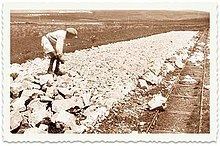Period 1919 – 1923 | ||
 | ||
Eight year old torah reader third aliyah for 5th day of hanukkah
The Third Aliyah refers to the third wave—or aliyah—of Zionist immigration in modern times to Palestine from Europe. This wave lasted from 1919, just after the end of World War I, until 1923, at the start of an economic crisis in Palestine.
Contents
- Eight year old torah reader third aliyah for 5th day of hanukkah
- Bram s bar mitzvah third aliyah
- History
- Motivation
- Social makeup
- Personalities
- References
Bram s bar mitzvah third aliyah
History
Approximately 40,000 Jews arrived in Palestine during the Third Aliyah. The bellwether of the Third Aliyah was the ship SS Ruslan (Russian-language article at Руслан (корабль)), which arrived at Jaffa Port on December 19, 1919 carrying well over 600 new immigrants and people returning after being stranded in Europe during the war.
The Third Aliyah was triggered by the October Revolution in Russia, anti-semitic pogroms in Eastern Europe, the British occupation of Palestine, and the Balfour Declaration. The pioneers of the Third Aliyah originated mainly from Eastern European countries: 45% from Russia, 31% from Poland, 5% from Romania, and three percent from Lithuania.
Most of the newcomers were young halutzim (pioneers), who built roads and towns and commenced the draining of marshes in the Jezreel Valley and the Hefer Plain. Afterwards they became a smaller proportion of the immigrants. The importance of those pioneers was just as great as that of the pioneers of the Second Aliyah. Their ideology contributed a great deal to the construction of the Palestine, and so they imprinted their mark on Zionism and also on the development of the Jewish settlements in the country of Israel.
The Histadrut Labor Federation was established at this time.
Motivation
Immigrants had high hopes for a new future in the Holy Land, but more than that, they were pushed to immigrate due to the developments in Europe and the growth of the nationalism aspirations of various minority groups. Several factors motivated the immigrants:
The official Zionist institutions were opposed to the third immigration wave. They feared that the country would not be able to absorb such a great number of people. They even requested that only people who had enough economic resources come to the country. However, the harsh reality changed their expectations: the bad economic situation of Jews of Eastern Europe, and also the riots, forced many to emigrate to countries which did open their gates—the United States and Western Europe—and to those who had a pioneering impulse and a Zionist recognition, Palestine was suitable as their new home.
Social makeup
Many of the new immigrants of the Third Aliyah were affiliated with HeHalutz and Hashomer Hatzair. Yitzhak Lamdan and Uri Zvi Grinberg immigrated to Palestine during the Third Aliyah.
